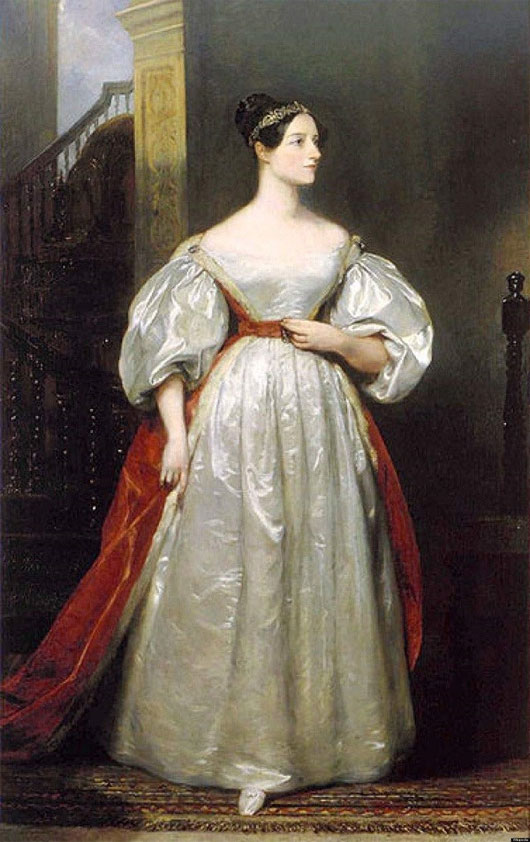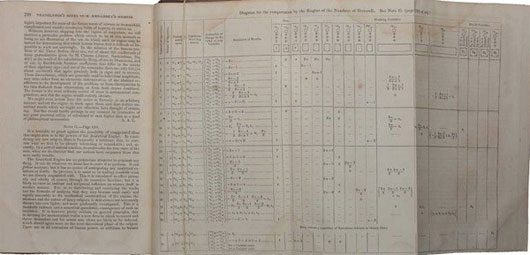Anonymous female scientists contribute to changing the world
With the exception of Marie Curie, how many other female scientists can you name? Let's review some of the lesser known female scientists, who have been able to contribute directly to the achievements of world science to this day.
1. Ada King - the first female programmer of humanity
Having a peaceful childhood and lack of care from a father from an early age, Ada King (1815 - 1852) found himself a joy that was involved in high-level mathematical research. And then, Ada's talent was discovered.

She quickly became a colleague with Charles Babbage computer researcher after being introduced by her lecturer. Realizing that the machines used to compute appeared popular in the nineteenth century, but still very cumbersome, especially arithmetic computers, Babbage studied and proposed a new initiative, called the Stool Tool. .

Ada realized that the potential of this initiative could go beyond simple maths, so she devoted herself to this research. While translating and learning about analytical tool data, she wrote down the first algorithms - considered as a computer program later on.
2. Emmy Noether - math queen
At the same time as Einstein, Emmy Noether (1882 - 1935) was likened to "queen of mathematics". She studied abstract algebra and wrote many books on different mathematical concepts. Not only that, she also wrote her own theorem called 'Noether's theorem' . The theorem talks about fundamental laws such as linear momentum conservation and energy conservation .

Even today, Emmy's research is still used in exploring black holes and finding new objects in space.

It can be said that Emmy is not only a godmother for modern mathematics but also a very generous person. She allowed other scholars to use her work without source, so she was always honored as a co-author of modern mathematics articles. Her name is given to a small asteroid in the solar system belt.
3. Mary Anning - paleontologist
Mary Anning (1799 - 1847) was born into a working-class family. Her father often exploited fossils in his spare time to sell to tourists, and he often took his children with him when searching.
Although she is expected to pursue farm work, Mary decides to choose a "digging" career, learn about fossils because she always has inspiration for them.

Mary made a series of revolutionary discoveries in the early nineteenth century. She has unearthed giant bones of fish tuna, plesiosaurs (a water dinosaur with four fins and long necks) or flying lizards between 1809 and 1829.
Fossils of these ancient dinosaurs are extremely important discoveries because no one has found clues about them before. Mary's contributions helped solve many of the controversies about extinction and became the founding idea of paleontology .

But because she came from a poor heretical family, her findings were not recognized by the scientific community. Geologists reported Mary's discoveries but never mentioned her involvement. Only when she died, some species were named after Mary in honor of important contributions to changing paleontological models.
4. Dorothy Hodgkin - discovering the structure of vitamin B12
Dorothy Hodgkin (1910-1994) was born in Egypt, whose parents were archaeologists. During World War I, Dorothy returned to England and began her studies.
Early on, she showed off her extraordinary talent for chemistry and was accepted to attend Somerville University despite not having a good reputation in Latin. Here, she began to be aware of X-ray crystals , which later led to her greatest discoveries.

Using the new X-ray crystallography technique and the first computers, she discovered the molecular structure of penicillin, vitamin B12 and insulin . Her work helped draw complex protein maps that were welcomed as a great achievement.

Since then, scientists have been able to change and synthesize new strains of penicillin, insulin and B12, to help save countless lives. She received the Nobel Prize in 1964 by discovering the structure of B12 and also a human rights activist fighting for peace and disarmament in the world.
5. Jocelyn Bell Burnell - the first to observe, analyze the hidden crystals

Jocelyn Bell Burnell, the Irish astrophysicist, began studying astronomy after her father, an architect, designed the cosmopolitan model in Northern Ireland. In 1969, Burnell received his doctorate at Cambridge University, England, when she was involved in the construction of a telescope that allowed the detection of radio signals from hidden crystals, remnants of large stars.
Her name and colleagues appear on many academic publications. But only Antony Hewish, superior of Burnell and colleague Martin Ryle, received the Nobel Prize in 1974 for these discoveries.
6. Rosalind Franklin - photographing DNA structure

Rosalind Franklin, an English female scientist, was the first to photograph DNA structures through X-ray diffraction . Today, we know that DNA is a double helix, consisting of two parallel nucleotide circuits, twisted evenly from left to right.
According to Scientific American, Franklin's DNA images were used without her permission. In 1953, Francis Crick and James Watson published a series of photos on the edition of Nature, but only noted the name Franklin at the bottom of the page. Franklin passed away before seeing Watson and Crick receive the Nobel Prize. In 1958, Franklin died of cancer, possibly due to excessive exposure to X-rays.
7. Lise Meitner

Lise Meitner, an Austrian physicist, worked with chemist Otto Hahn for 30 years to discover the phenomenon of nuclear decay , which allowed the creation of an atomic bomb later. Meitner conducted part of the study in Sweden when fleeing the Nazis. Although both scientists studied and were nominated, only Hahn received the Nobel Prize in 1944.
Meitner also discovered, adding an element in the periodic table, the element meitneri (Mt), with the atomic number 109.
8. Cecilia Payne-Gaposchkin

Cecilia Payne-Gaposchkin is an expert in plant, physics, chemistry at Cambridge University, England, in the early years of the 20th century. Payne moved to the US to graduate and receive a degree. At Radcliffe University under Harvard University, Payne became the first to receive a doctorate in astrophysics when explaining a star made of hydrogen and helium .
Payne's thesis is evaluated as "the best doctoral thesis ever written in the field of astronomy ". However, it took five years for her discovery to be widely accepted, when scientist Henry Norris Russell published similar results.
9. Nettie Stevens

Nettie Stevens, an American geneticist, was the first to discover the importance of the Y chromosome in determining the sex of a given species. Previous scientific circles said that mother and environmental factors determine a person's sex.
In the eyes of many people, Stevens is only working for the famous scientist Thomas Morgan, while most of her findings are done independently. Thomas Morgan initially dismissed Stevens's thoughts about the Y chromosome, but later recognized the discovery in 1905.
9. Irene Curie-Joliot

Chemist Irene Curie-Joliot , the daughter of scientist Marie Curie, pursued her passion for scientific research . Accordingly, Irene Curie-Joliot received the Nobel Prize in chemistry in 1935.
10. Jane Goodall

World famous English primate Jane Goodall has spent more than 50 years living in the forest with chimpanzees in the primeval forests of Africa. She is also known as the "green forest knight" when she devoted her youth to studying this primate .
11. Barbara McClintock

Geneticist Barbara McClintock was honored to receive the 1983 Nobel Prize in Biology and became the first American woman to receive this prestigious science award. She had a groundbreaking study of the maize genome . According to McClintock, the corn genome is not fixed. It has a lot of changes across different lifetimes, not to mention mutations.
12. Hypatia

Greek Hypatia has many outstanding achievements in the field of physics and astronomy . She was honored as a saint of science at the time of society, discouraging women from going to school and improving, expecting them to become scientists and mathematicians. She was the famous mathematician and philosopher daughter in Alexandria and was taught by her father.
- Findings of dinosaurs change the world
- Special hand letters contribute to changing world history
- Anonymous claims NASA is about to make an important announcement about alien life
- UNESCO honors five outstanding female scientists
- Published from NASA responds Anonymous: What life there is no alien life
- 5 U70 female scientists receive Kovalevskaia award
- New discovery about the disappearance of the world's first female pilot
- Vietnamese female scientist in the most influential list in the world
- Scanning the skull of a human skull to serve forensic medicine
- 7 technologies are changing our world every day
- 28 photos prove the world has changed
- Anonymous creatures and extinct endings
 The most famous scientific failures in history
The most famous scientific failures in history Mysterious genius mechanic and the machine froze time
Mysterious genius mechanic and the machine froze time The son carries the 'bad gene' of genius Albert Einstein
The son carries the 'bad gene' of genius Albert Einstein Isaac Newton
Isaac Newton